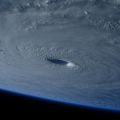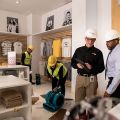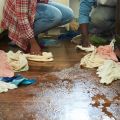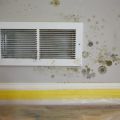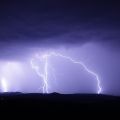8/25/2021
What to Do After a Flood in Dothan, Alabama
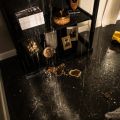
6/25/2021
Floods remain as the number one natural disaster in the United States, according to the National Flood Insurance Program (NFIP). Floods can happen in an instant, so you need to think and act fast to save as much of your home and belongings as possible. Time is of the essence when it comes to water damage, as prolonging it would mean further damage to property and cause long-term problems like mold.
When a flood happens, there are some steps that you can take before the professionals arrive. ServiceMaster by Reed discusses what you should do after a flood below.
When a flood happens, there are some steps that you can take before the professionals arrive. ServiceMaster by Reed discusses what you should do after a flood below.
What to Do When Your Property is Flooded
Inspect your property for safety hazards
- Check your flood insurance coverage and call your insurance provider before assessing the damage.
- Ensure your safety by checking if your home is structurally secure, if your power is still on, if there are gas leaks present and if the floodwater is contaminated.
- Contact an authorized inspector to check the stability of your home. If you are concerned about the structure collapsing, do not enter your home.
- Prevent the risk of electrical shock by avoiding stepping in standing water, as it may already be charged by a lethal amount of electrical current, especially if there are compromised electrical systems and your outlets have been submerged by the flood.
- Gas and propane leaks are dangerous, so call the utility company if you suspect one.
- Floodwaters, especially from natural disasters, are highly likely to contain sewage, chemicals and other contaminants. Call a professional flood damage restoration company to inspect the affected area, create a restoration plan and start the cleanup right away.
Remove as many items as you can
- A flooding event increases humidity and moisture, which can damage even those items which have not been in direct contact with water.
- After it has been declared safe to return to your home, immediately remove items within your reach to prevent further damage and to increase the chance of them being salvaged.
- Be careful when removing electronics, as they may cause an electric shock if plugged in or powered up.
- Dry all recovered items and store them in a dry and secure area.
Extract water and prevent mold growth
- Rent a wet vacuum or submersible pump when attempting to remove water on your own. However, water extraction is still best done by flood damage restoration specialists who have proper equipment and experience.
- Lower humidity levels to prevent mold growth while drying furnishings.
- Increase ventilation and accelerate the drying process by opening windows and doors as well as running dehumidifiers and fans.
Clean, sanitize and restore
- Clean and sanitize dried-out surfaces such as carpets, drywall and wood beams to avoid mold growth, diseases and infections.
- Different items need different techniques for them to be cleaned thoroughly, so it would be better to contact a restoration specialist to prevent further damage and to know which items need to be repaired or replaced.
Keep an inventory
- Document the damage through photos or videos and keep any receipts or estimates for repairs or restoration for insurance purposes.
Contact ServiceMaster by Reed for Flood Damage Cleanup
To immediately respond to your flood damage emergency, ServiceMaster by Reed is available 24 hours a day, 7 days a week at (334) 500-3365. We offer a FREE inspection and estimate. You may also schedule an appointment by messaging us online.
We service residential and commercial properties in Alabama:
We service residential and commercial properties in Alabama:
- Dothan
- Abbeville
- Eufaula
- Ozark
- Daleville
- Enterprise
- Andalusia
- Fort Rucker
- Headland
- Troy
- Opp
- Newton
- Ashford
- Hartford
- Geneva
- Elba
- Florala
ServiceMaster by Reed has a team of licensed and certified water damage restoration technicians with advanced tools, equipment and procedures to ensure proper flood cleanup. Don't know what to do next? Contact us today.
Other articles and publications:
Prepare for a hurricane in Dothan, Alabama. Contact ServiceMaster by Reed at (334) 500-3365 for water & flood damage cleanup and repair. 24/7 on-call.
Learn how to keep warm during a power outage in Alabama. For Dothan flood damage restoration and repairs, call ServiceMaster by Reed at (334) 500-3365.
9/28/2021
Learn tips for your small business to survive a disaster. Call ServiceMaster by Reed at (334) 500-3365 for Dothan, AL water, fire and mold mitigation service.
7/23/2021
Learn about what causes water damage incidents. For Dothan water damage cleanup & repair, call ServiceMaster by Reed of Alabama at (334) 500-3365.
8/25/2021
Learn some common facts about mold. Contact ServiceMaster by Reed in Alabama for mold remediation services at (334) 500-3365. 24/7 on-call
6/25/2021
How Thunderstorms Can Affect Your Business
9/28/2021


